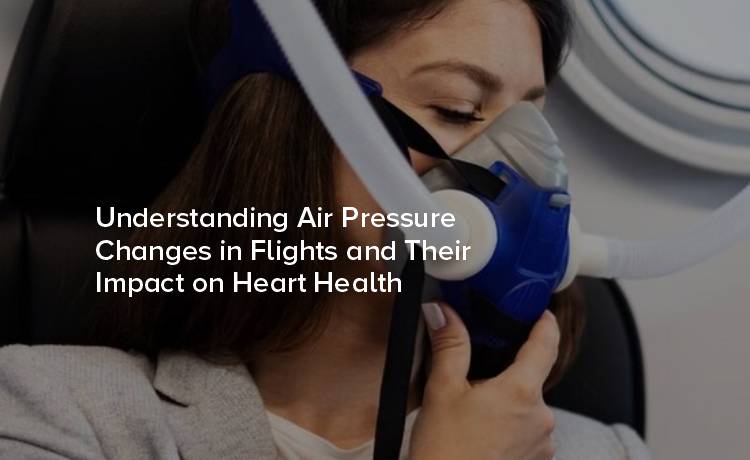
Flying thousands of feet above the ground might feel routine today, but the physiological changes your body undergoes during a flight are far from ordinary. While most people experience minor discomforts like ear popping or slight swelling in their feet, changes in air pressure at high altitudes can have a deeper impact—especially on heart health. For individuals with existing cardiovascular conditions, understanding these changes is crucial to staying safe while traveling.
Airplanes are pressurized to ensure passengers can breathe comfortably while flying at high altitudes. However, the air pressure in the cabin is not the same as it is at sea level. Most commercial flights maintain a cabin pressure equal to that of an altitude of 6,000 to 8,000 feet above sea level. At this pressure, the amount of oxygen in the air is reduced, making it harder for your body to absorb the oxygen it needs.
This drop in oxygen levels, known as "hypobaric hypoxia," can cause changes in how your cardiovascular system functions. While the healthy heart and lungs of most passengers adapt to this environment without notable issues, those with heart conditions or other health issues should be aware of potential risks.
To understand the impact of cabin pressure on your heart, it’s important to assess how high-altitude conditions affect cardiovascular health.
Your heart relies on a steady supply of oxygen to keep beating effectively. When oxygen levels drop in the cabin, your heart may work harder to circulate oxygen-rich blood to vital organs. For people with heart conditions like arrhythmia, coronary artery disease, or congestive heart failure, this additional strain could trigger symptoms like fatigue, shortness of breath, or even chest pain.
Blood pressure often increases temporarily during flights due to the effects of low oxygen availability. Sudden changes in posture during takeoff and landing may exacerbate these fluctuations. Elevated blood pressure during flights can be particularly concerning for those with hypertension or other cardiovascular diseases.
Airplane cabins have very low humidity levels, which can lead to dehydration. Dehydration, in turn, thickens the blood, increasing the risk of clot formation. This is especially critical for those predisposed to deep vein thrombosis (DVT), a condition where blood clots form in deep veins, often in the legs. When DVT-related clots travel to the lungs or heart, they can become life-threatening.
Some individuals may experience palpitations or irregular heartbeats due to the combined effects of low oxygen levels, dehydration, and changes in cabin pressure. While occasional irregular rhythms may not be harmful for healthy individuals, they can pose risks for people with heart issues.
While flying is typically safe for most people, those with existing heart conditions are at a higher risk of experiencing complications from cabin pressure changes. Factors that increase vulnerability include:
If any of these conditions apply to you, it’s essential to consult your doctor before traveling.
Now that we’ve covered the risks, the good news is there are many actionable steps you can take to minimize any potential impact on your heart health during flights.
1. Stay Hydrated
Drink plenty of water before and during your flight to prevent dehydration and reduce the risk of blood thickening. Avoid alcohol and caffeinated beverages, as they can further dehydrate your body.
2. Move Regularly
Make a conscious effort to move during the flight. Walk around the cabin when possible or perform seated exercises to enhance circulation. This is crucial for preventing deep vein thrombosis (DVT).
3. Wear Compression Stockings
Compression stockings can help to reduce swelling and improve blood flow in the legs, lowering the risk of blood clots.
4. Adjust Medication as Needed
Speak to your doctor before your trip about whether you need to adjust any heart-related medications for the flight. For example, blood pressure medications or anticoagulants may need to be adjusted for optimal protection.
5. Travel with Essential Supplies
Always bring a supply of prescribed medications in your carry-on and keep them easily accessible. If you use medical devices such as a pacemaker or oxygen concentrator, make sure the airline staff is informed before your flight.
6. Practice Breathing Exercises
Breathing exercises can help keep your oxygen levels up and manage symptoms of anxiety or discomfort during the flight. Deep, rhythmic breathing can also help to regulate your heart rate.
Even with proper preparation, there’s always a small chance of experiencing unexpected heart-related symptoms during your flight. Knowing how to react quickly is essential.
For many individuals, even those with existing cardiovascular concerns, flying is both safe and manageable with the right precautions. By understanding the effects of cabin pressure and taking steps to minimize potential risks, you can better enjoy the adventure waiting for you at your destination.